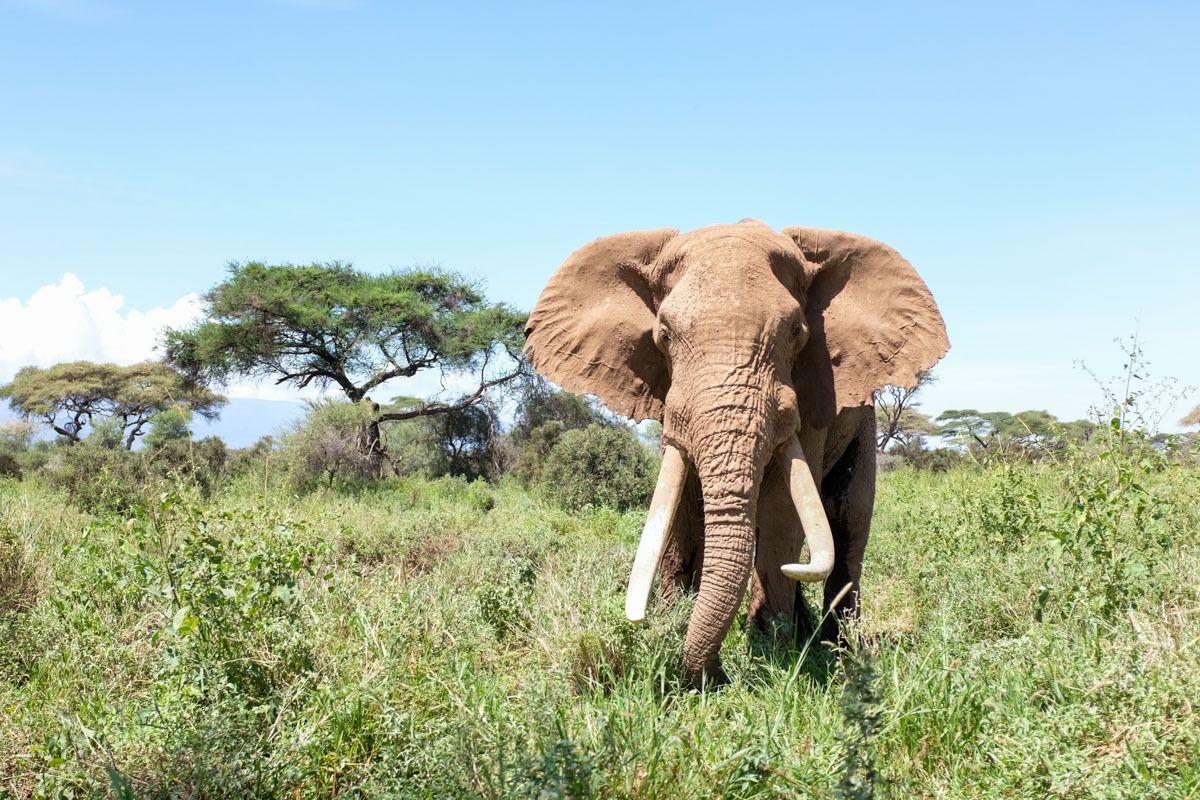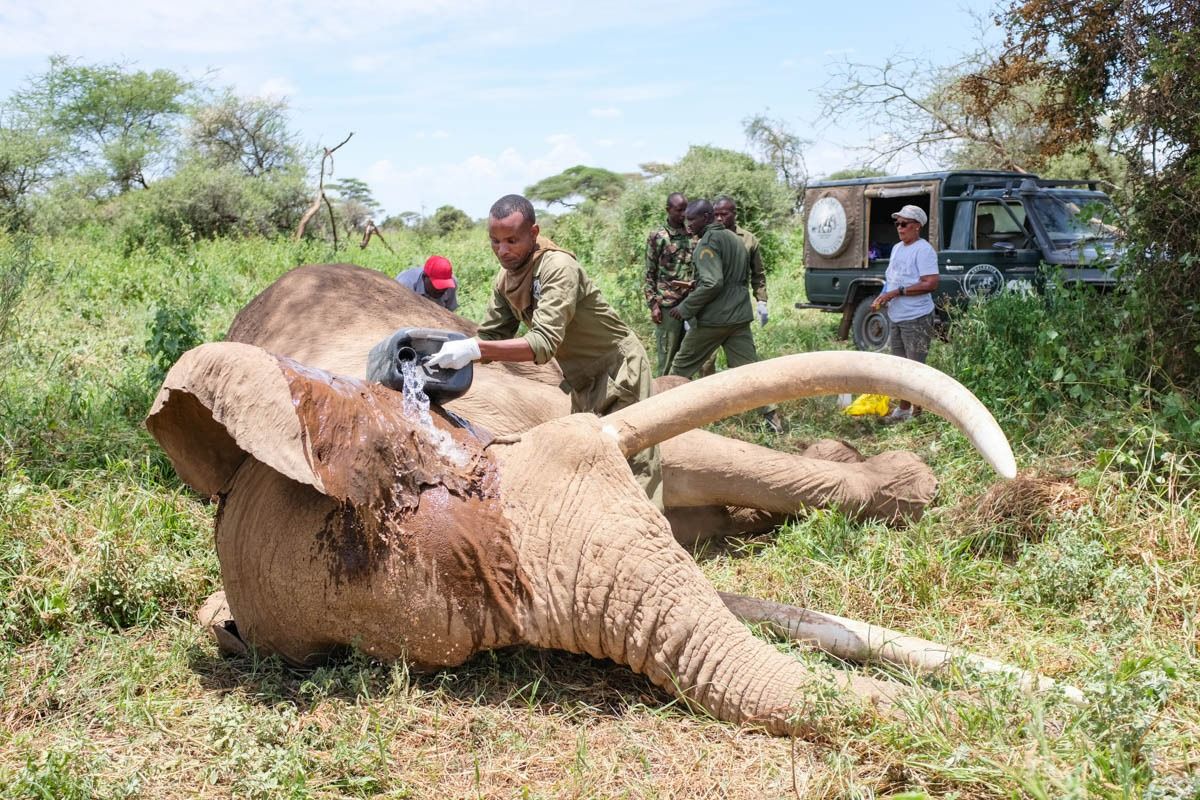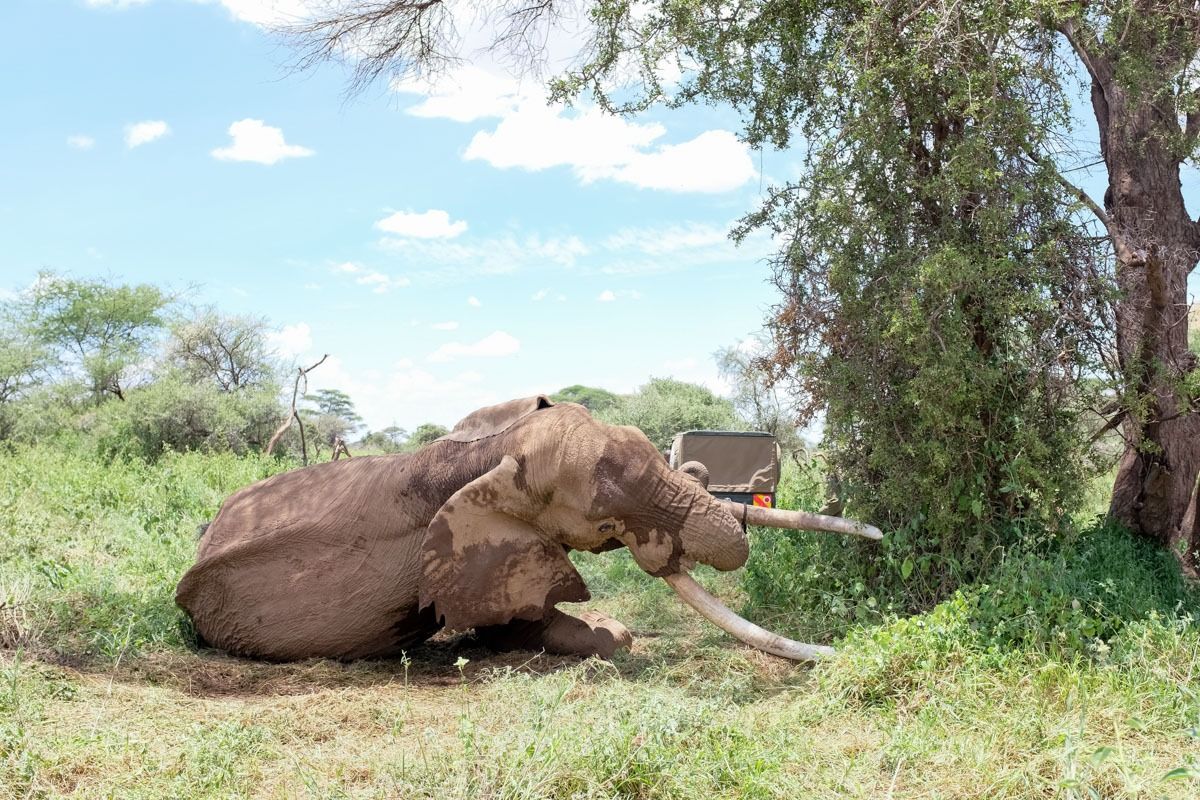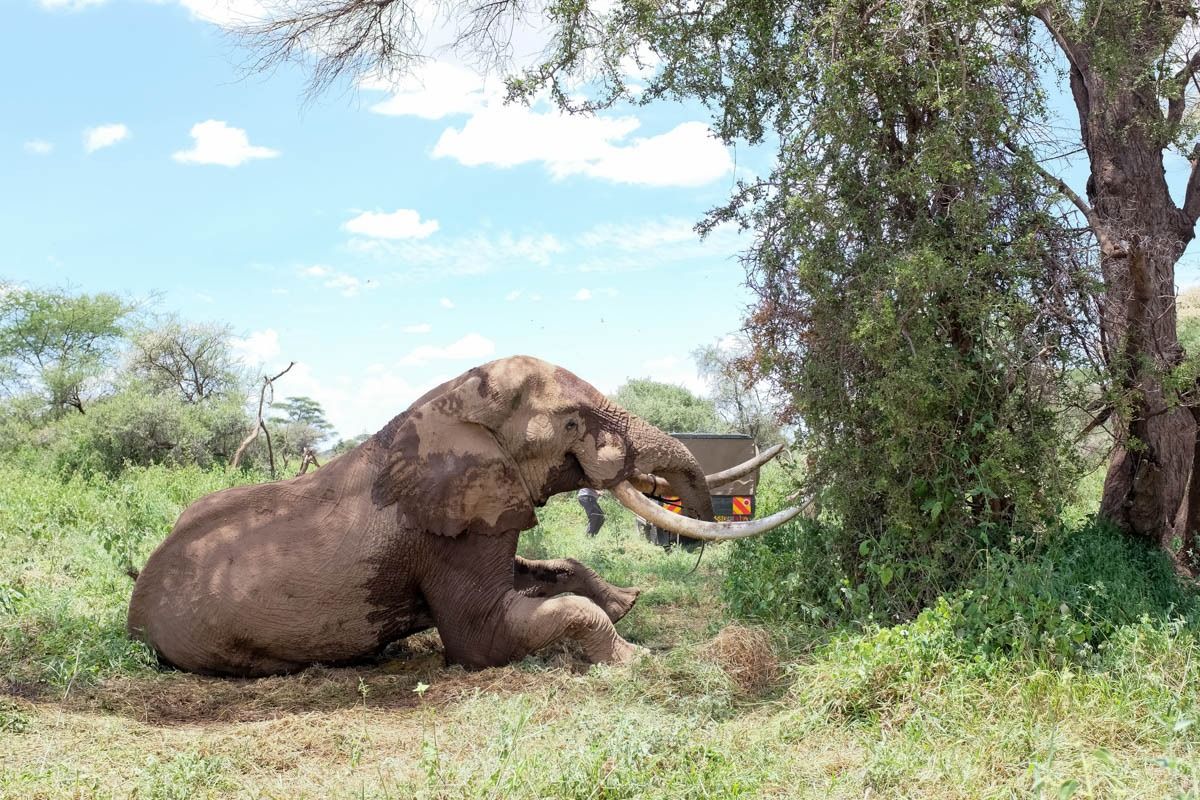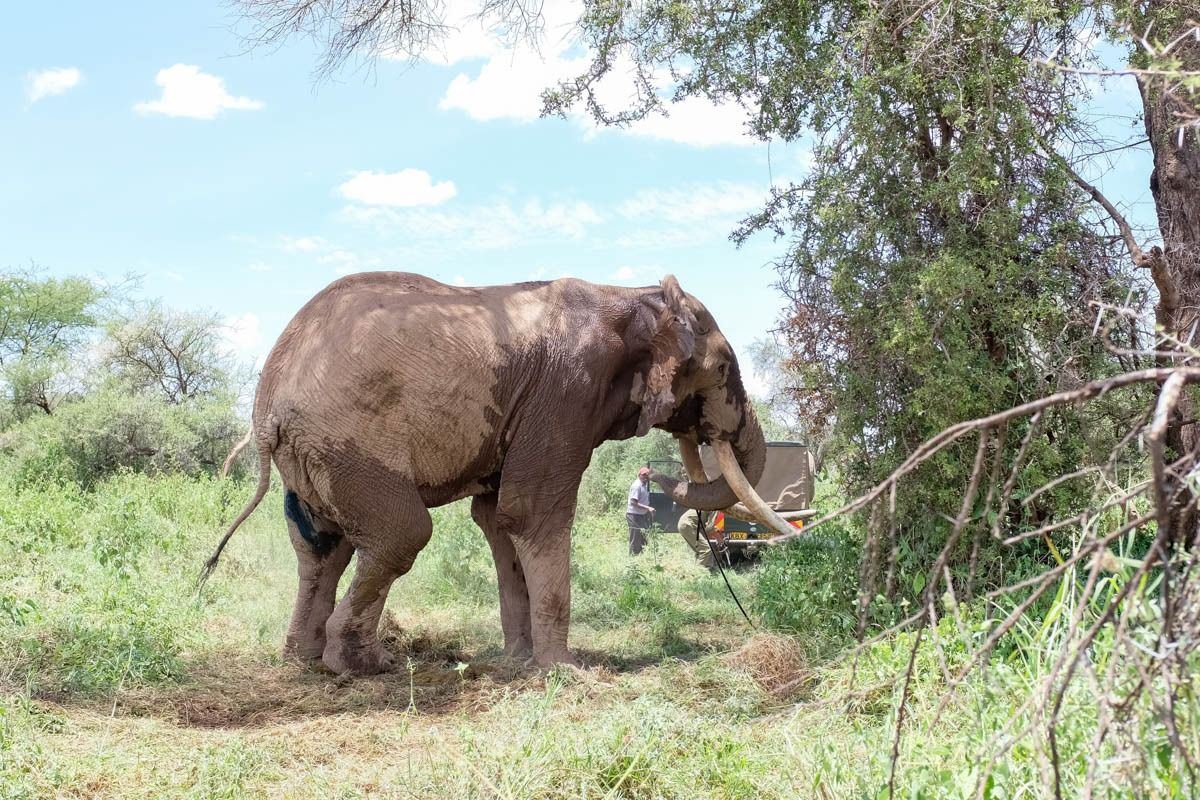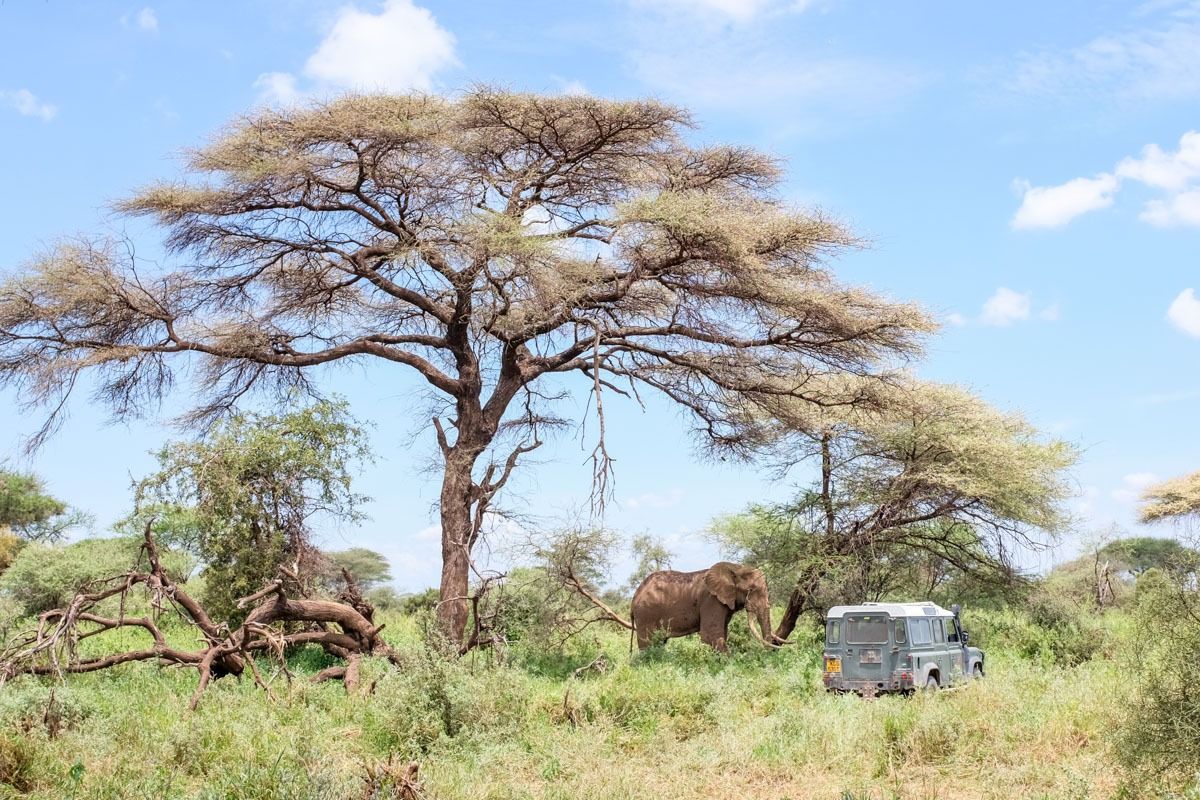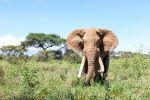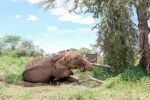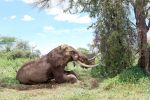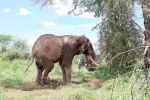To dart, or not to dart?
The vet and rangers stood under one tree. Vronsky, one of Amboseli’s “super tuskers,” stood under another nearby.
Vronsky was just coming out of a period known as musth, a state of heightened sexual behavior accompanied by a rise in reproductive hormones, which can lead to an increased risk of complications during anaesthetization.
But the injury to his leg was worsening, and he was having trouble walking. If left untreated, he would certainly die. In the end, the decision was an easy one.
The darting was straightforward, but the wound turned out to be anything but. There was a deep puncture that was cleaned and treated, but more worrying was the discovery of trauma to the leg joint. It was impossible to tell how he got the injury. The Sheldrick Wildlife Trust-funded KWS vet did what he could, but Vronsky’s chances of a full recovery were maybe 50/50.
After the anesthetic was reversed, there was a brief scary moment when he struggled to get up, but with a rope around one of his giant tusks, a Land Cruiser was able to pull him into an upright position, and he stood from there.
In the days following, Big Life rangers tracked Vronsky daily. Each day, he was walking more easily than the last. The swelling slowly subsided, and more than a month later, we are happy to report that he appears to have made a full recovery.
Our partners at Amboseli Trust for Elephants (who also assisted during the treatment) have monitored him since birth, and so we know that Vronsky turns 48 later this year. Thanks to this intervention he should make it to that birthday, and hopefully many more! Photos: Jeremy Goss Watch the reel on Instagram.

